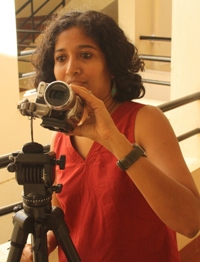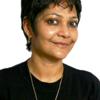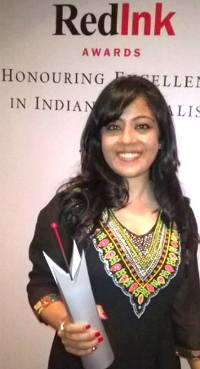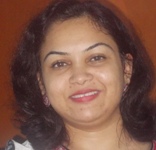14:30 minutes is not long enough to understand why women are considered lesser human beings in this country. It is not enough to understand why most men think it is absolutely their right to molest, sexually harass and rape women and children. It is definitely too short a timeframe to find a solution to the issue. But it is a good place to start asking questions; most important question of all - why are women blamed when they are molested or raped? That is what the documentary film Good Girls Don’t Dance, is attempting to answer. The documentary asks questions that are usually missing from the debates on rape.
The question was there on every woman’s mind, but got no answers. And certainly it was not something that was discussed in public. But the brutal gang rape and murder of the nursing student in Delhi changed it all. ‘Rape’ hit headlines like never before. It became a national issue. There were hushed but animated discussions at the dinner table. Parents ran for cover when nine-year-olds asked them what ‘rape’ meant. The issue cut across all strata of the society.
The ‘outrage’ that followed has been covered much and discussed threadbare in media and in social gatherings. But the question why women are raped was not answered in a clear cut manner. Rather, no one wanted to hear the right answer. From chowmein to short skirts to late night pubbing were blamed. The fact that ‘rape’ is about power and dominance and had little to do with lust was not acknowledged by the majority.
What is the root cause of this apathy that women received? That is crux of the documentary film, Good Girls Don’t Dance. Talking to women from both rural and urban backgrounds for research, it was clear that there were a million lakshman rekhas or invisible lines that the women were to be aware of and mind at all times; the perception of being seen as ‘good’ was most important for the well-being of a woman. But the definition of good and bad changed with geography, caste, community, access to education and finance.
So the primary questions asked to the interviewees were who is a good girl and who is a bad girl. The list to check off while attempting to be good girl was long. But the don’ts outnumbered the dos. The answers also led us to the third question, equally important. Do clothes play a role in defining good and bad? Clothes it seems are a more tangible way of describing good girl and bad girl.
The answers clearly show the ambiguity in the way women’s roles are perceived. Young men want women to be open and friendly but not too ‘friendly.’ Women themselves are less lucid with these definitions. A young girl says ‘free show (skin show) is not acceptable’ but at the same time adds that “everybody has the right to live on their terms.”
There are more than 45 people from different age groups and different social and economic backgrounds who answer these questions in the film. The point is not to judge them to but to understand where their beliefs come from. Because it is these very beliefs that shape the society’s response to woman being molested or raped.
The film intends to start a balanced discussion on the issue.
Synopsis:
Good girls don't dance.
Good girls don't go out after sun down.
Good girls don't use mobile phones or have Facebook profile.
Good girls stay away from chowmein-eating boys.
Good girls don't loiter.
Good girls don't fall in love.
Good girls don't wear jeans or show skin.
Good girls don't drink. Good girls don't question.
Good girls don't party and good girls definitely don't have fun.
But then, good girls don't get raped or molested, or do they?
This is a crowd funded documentary film. It explores the notions of good girl and bad girl and the role it plays in society's reaction to sexual harassment and rape.
It is an effort to understand why the girl is blamed when she's molested, sexually harassed or raped.
Crew:
Script and Direction: Padmalatha Ravi is a journalist and a documentary filmmaker. She has largely worked with the development sector and made six documentary films and scripted a short film. This is her first independent documentary.
Camera, lighting and illustrations: Sajana J is a communications consultant for the development sector and an avid photographer. She also doodles.
Production Management and Music: Umesh PN. He is a theatre trainer, playwright and music enthusiast. This is his first film project.
Dance and Choreography: Shabari Rao is a Bangalore-based contemporary dancer.
Find us on facebook: facebook.com/TheThumbPrintMag







































